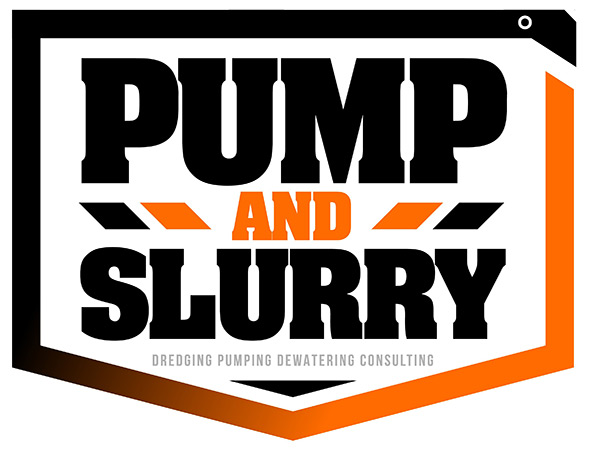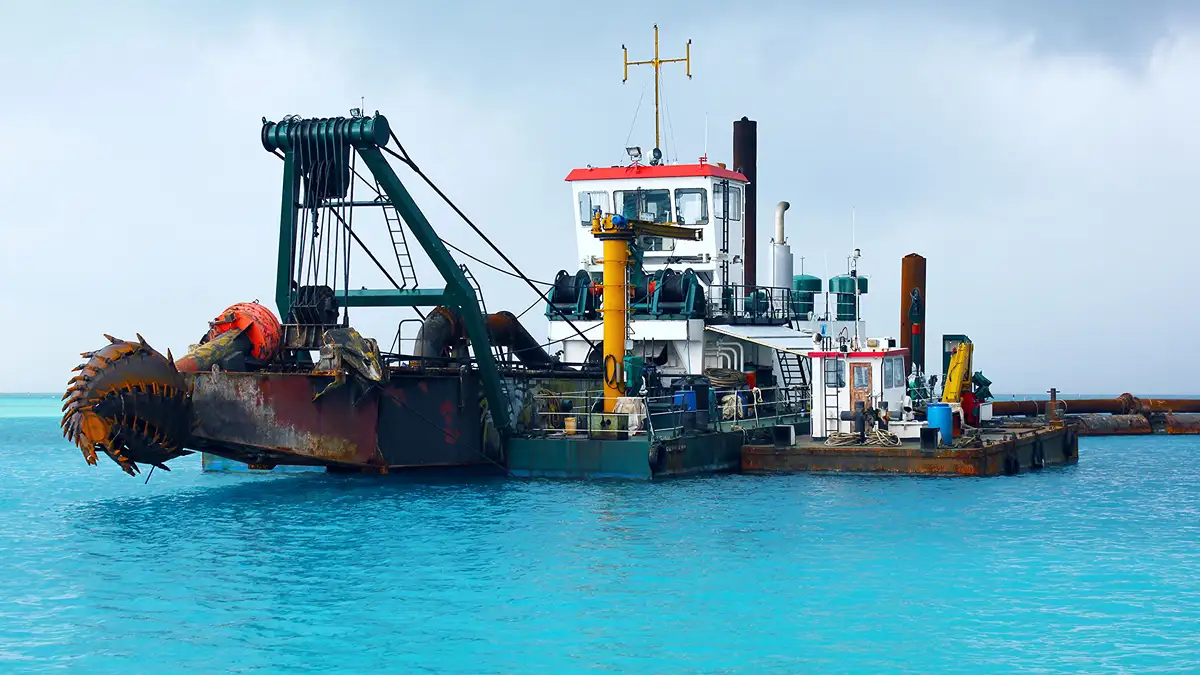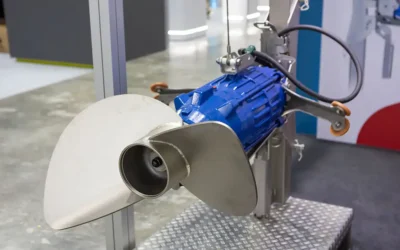Dredging plays a critical role in maintaining and developing infrastructure across industrial sectors, including mining, energy, marine construction, and municipal planning. Whether deepening ports, reclaiming land, or maintaining navigable waterways, dredging activities are often foundational to enabling logistics, protecting assets, and sustaining long-term economic operations. In industries where the movement of bulk materials, coastal access, and environmental compliance are daily concerns, the services provided by qualified dredging companies are essential.
In high-stakes environments such as offshore energy platforms, mineral extraction zones, or urban harbors, selecting the right dredging equipment is far more than a technical detail. It can determine the success or failure of an entire project. Equipment that is poorly suited to the material type, environmental conditions, or disposal logistics can significantly delay timelines, inflate costs, and increase environmental risk. On the other hand, aligning dredging technology to specific site conditions leads to optimized performance, minimized downtime, and better control over capital and operational expenditure.
Leading dredging companies recognize this alignment as a core competency. These firms rely on robust technical assessments, geotechnical surveys, and hydraulic modeling to inform their equipment strategies. By tailoring equipment packages, whether deploying cutter suction dredgers for dense sediment or trailing suction hopper dredgers for offshore transport, top-tier dredging company operators ensure that machinery matches the physical and regulatory demands of the job. This precision-driven approach not only improves throughput and safety but also enhances return on investment (ROI) through increased efficiency and reduced rework.
In today’s competitive project landscape, where compliance, cost control, and delivery timelines are under constant scrutiny, successful dredging companies distinguish themselves by treating equipment selection not as an afterthought but as an integrated part of strategic project planning.
The Leading Dredging Companies: Who Sets the Standard?
In a global marketplace defined by complex marine infrastructure and environmentally regulated waterways, a select group of dredging companies consistently delivers high-capacity, technically sophisticated solutions. These top-tier firms are distinguished not only by the scale of their operations but by their strategic use of advanced dredging equipment tailored to demanding project requirements. Among them, four organizations are commonly referred to as the “Big 4” in the international dredging industry, each setting benchmarks in capability, innovation, and project execution.
Royal Boskalis Westminster (Netherlands)
As one of the largest and most diversified dredging companies in the world, Royal Boskalis Westminster has built a reputation for handling multi-billion-dollar marine infrastructure projects across all continents. With a fleet that includes state-of-the-art trailing suction hopper dredgers and cutter suction dredgers, this specializes in port construction, land reclamation, and offshore energy support. Boskalis’s global reach and fleet capacity allow it to scale operations quickly and deliver solutions for both public and private sector clients, often in remote or environmentally sensitive regions.
Van Oord (Netherlands)
Van Oord is renowned for its engineering excellence in large-scale marine infrastructure, including coastal defense systems, offshore wind farms, and deep-water port expansions. This Dutch dredging company leverages advanced dredging equipment and modular deployment strategies to manage complex logistics, especially in megaproject environments. Van Oord’s integration of environmental impact assessments into its project planning has made it a preferred partner for both government agencies and multinational companies.
DEME Group (Belgium)
With a strong emphasis on innovation and sustainability, DEME Group brings cutting-edge technology to every stage of the dredging process. Its fleet includes some of the most advanced ones currently in operation, with capabilities extending into offshore renewables, deep-sea mining, and environmental remediation. This dredging company is particularly noted for its leadership in low-emission operations and ecological compliance, making it a frontrunner for projects where environmental stewardship is critical.
Jan De Nul (Belgium)
Jan De Nul combines offshore engineering excellence with decades of dredging experience, offering fully integrated solutions in port development, subsea infrastructure, and land reclamation. This family-owned dredging company maintains one of the youngest and most versatile fleets in the industry, ensuring optimal efficiency and reduced environmental impact. Jan De Nul’s ability to execute turnkey dredging projects in some of the world’s most challenging marine environments sets it apart from competitors.
Other Notable Players
While the “Big 4” dominate large-scale global markets, several other companies are significant contributors, particularly in regional and specialized domains. China Harbour Engineering Company (CHEC) has expanded aggressively across Asia, Africa, and the Middle East, establishing itself as a key player in port and harbor development. In the United States, Great Lakes Dredge & Dock Company holds the largest domestic fleet and is a leading choice for federal and municipal dredging contracts. Regional dredging firms, particularly those with niche expertise or local environmental compliance knowledge, continue to play critical roles in delivering localized projects.
Key Differentiators Among Them
What truly sets the top ones apart is not just the size of their fleet, but the specialization and integration behind it. These firms invest heavily in custom-built equipment, which is optimized for specific sediment types, operational depths, and environmental conditions. Many also offer comprehensive turnkey project capabilities, spanning from feasibility studies and permitting to final disposal and reclamation, making them strategic partners rather than just service vendors. Moreover, leading companies prioritize compliance with increasingly strict environmental standards, positioning themselves for long-term growth in regulated and ecologically sensitive markets.
For procurement leaders and engineering managers, choosing the right one means more than evaluating a bid; it requires understanding each firm’s technological edge, operational history, and capacity to align equipment with the project’s specific demands.

Overview of Dredging Equipment Types and Use Cases
They rely on a wide array of specialized it’s equipment to execute projects across varying geographies, sediment profiles, and environmental constraints. The effectiveness of any of it in meeting project goals, whether for mining tailings management, port expansion, or shoreline protection, depends heavily on selecting and operating the right type of equipment for the task at hand. Each category of them offers specific advantages, and understanding their use cases is crucial for procurement teams and project decision-makers.
Hydraulic Dredgers
Hydraulic once is commonly used by dredging companies for high-production applications, particularly where the transport of fine sediments or slurry is required. These systems operate by using powerful pumps to suction material from the seabed or riverbed and transport it through pipelines for disposal or reclamation.
Cutter Suction Dredgers (CSDs):
One of the most versatile tools in a dredging company’s fleet, CSDs use a rotating cutter head to fragment compact material before suctioning it through a dredge pump system. CSDs are ideal for dredging hard clay, packed sand, and rock, making them suitable for large infrastructure, energy terminals, and land reclamation projects. Their ability to operate continuously while maintaining precise excavation profiles makes them a preferred option for high-value contracts.
Trailing Suction Hopper Dredgers (TSHDs):
TSHDs are self-propelled vessels equipped with large onboard hoppers and powerful centrifugal pumps. Larger dredging companies typically deploy these dredgers for maintenance dredging, harbor deepening, and offshore operations. Material is suctioned through trailing drag arms while the vessel is in motion, allowing for efficient sediment collection over large areas. Once full, the dredged material can be transported and disposed of at sea or offloaded for reclamation.
Mechanical Dredgers
Mechanical dredging equipment is often chosen by a dredging company when working with coarse, consolidated, or debris-laden sediments. These machines rely on direct physical excavation methods and are particularly effective in confined areas or near critical infrastructure.
Backhoe Dredgers:
Backhoe dredgers use an excavator arm mounted on a barge to scoop material from the bottom. These are typically employed by dredging companies for precision work in harbors, urban canals, and shipyards. Their ability to handle harder materials and navigate tight spaces makes them invaluable for port infrastructure upgrades or repair operations.
Clamshell/Grab Dredgers:
Clamshell dredgers utilize hinged buckets to “grab” sediment from the seafloor. While slower than hydraulic options, they offer excellent control, especially in projects that require sediment separation or minimal turbidity. A dredging company may select clamshells for cleanup dredging, foundation preparation, or areas with strict environmental oversight.
Bucket Ladder Dredgers:
These large-scale machines use a continuous chain of buckets to excavate tough or compacted material. Though less commonly used today due to their size and complexity, they remain relevant for specific industrial applications, such as mining slurry recovery or deep excavation in hardened deposits. Dredging companies with older but well-maintained fleets still operate these units for their reliability in challenging environments.
Environmental and Specialty Dredgers
For projects located in sensitive or regulated areas, many dredging companies employ low-impact once designed to minimize turbidity and environmental disruption. These include modular dredging systems, amphibious dredgers, and custom-fabricated equipment specifically designed for the removal of contaminated sediments, wetland restoration, or utility trenching in shallow water bodies.
Environmental dredgers are particularly valued in projects funded by government agencies or subject to strict ecological compliance, where precision, sediment control, and water quality preservation are paramount.
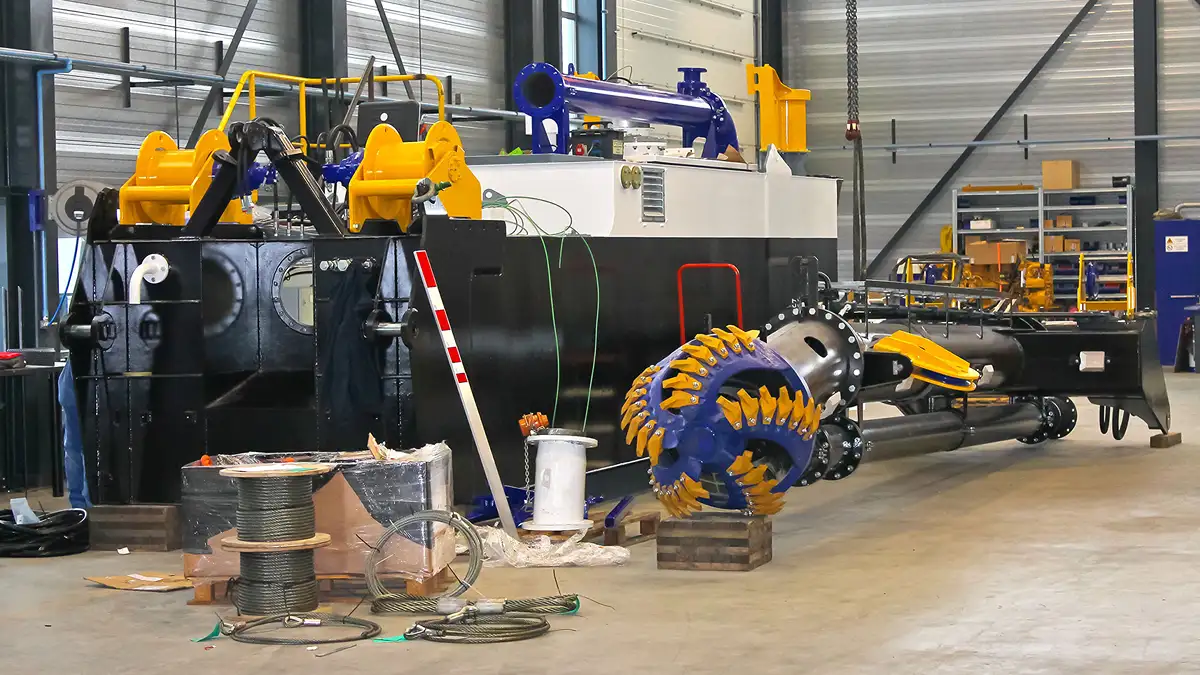
Factors That Drive Equipment Selection
One of the most critical decisions they must make at the outset of any project is selecting the appropriate dredging equipment. This choice is never one-size-fits-all. Instead, it is driven by a set of interdependent technical, environmental, and operational variables that directly impact cost efficiency, schedule integrity, and regulatory compliance. Leading dredging companies consistently invest in thorough pre-project analysis to ensure the equipment selected aligns with both site conditions and client objectives.
Project-Specific Considerations
Material Type
The nature of the seabed or riverbed material is a primary driver in equipment selection. Fine silt, soft clay, coarse sand, gravel, and rock each demand specific dredging equipment configurations. For example, cutter suction dredgers are typically selected for compacted or cohesive soils, while trailing suction hopper dredgers are more suitable for loose, transportable sediments. They rely on detailed geotechnical surveys to identify material properties before committing to a fleet deployment.
Dredging Depth and Site Access
The required dredging depth plays a significant role in equipment suitability. Projects in deep or open waters often require robust hydraulic dredgers with high suction power, whereas shallow or confined areas may necessitate mechanical dredgers with precision capabilities. Access constraints such as bridges, urban density, or restricted berthing also influence whether a dredging company opts for modular, low-profile, or barge-mounted systems.
Production Volume and Timeline
High-volume projects with tight deadlines require high-capacity dredging equipment that can operate continuously with minimal downtime. Conversely, lower-volume or environmentally sensitive projects may favor precision over speed. A reputable dredging company will assess the expected throughput and select equipment that ensures productivity targets are met without exceeding environmental or operational thresholds.
Environmental and Regulatory Constraints
Water Quality and Sediment Control
Those operating in ecologically sensitive areas must account for turbidity limits, contamination risk, and sediment dispersion. In such cases, a specialized environmental once, such as enclosed clamshells or low-turbidity suction heads, is selected to minimize ecological disruption. Projects involving contaminated sediment may require sealed transport systems and designated disposal methods.
Regulatory Compliance
National and regional regulatory bodies often impose strict guidelines regarding emissions, noise levels, and material handling. Their ability to demonstrate compliance through certified equipment and established protocols is essential for project approval and execution. Equipment selection is therefore influenced not only by site needs but also by legal obligations related to environmental protection, maritime safety, and public health.
Logistical and Disposal Requirements
Material Disposal Distance and Method
Where and how dredged material will be disposed of also impacts the type of dredging equipment deployed. For example, if the disposal site is offshore and far from the dredging zone, trailing suction hopper dredgers with onboard hoppers may be the most efficient choice. If the material must be pumped to an onshore location, pipeline-compatible hydraulic dredgers become necessary. Dredging companies factor in pump distance, lift height, and pipeline wear when planning transport logistics.
Support Infrastructure and Site Conditions
Existing infrastructure, such as available anchoring points, dock facilities, or access roads, can affect the mobilization and demobilization of equipment. Additionally, dredging companies must evaluate site-specific conditions like wave action, tidal flow, and weather volatility, all of which influence operational stability and equipment durability.
Cost and Performance Optimization
Balancing Capital and Operating Costs
A technically superior dredging equipment choice must also be cost-justified. Leading dredging companies approach selection with a lifecycle cost perspective, evaluating not only initial mobilization and fuel consumption but also maintenance requirements, wear part replacement, and production efficiency. The goal is to deliver optimal performance with the lowest total cost of ownership (TCO) across the project timeline.
Risk Mitigation and Redundancy
Selecting the right dredging equipment is also a matter of mitigating execution risk. Redundant systems, modular assemblies, and serviceable parts inventories help minimize unplanned downtime. For procurement teams, their strategy for mitigating technical risk through smart equipment selection is a key differentiator in the bidding process.
How Dredging Companies Match Equipment to Demands
The ability of dredging companies to match the right dredging equipment to project-specific demands is a core driver of operational success. This process goes beyond selecting from a fleet of machines; it is a strategic engineering decision rooted in data analysis, environmental constraints, and production forecasting. High-performing dredging companies treat equipment matching as a discipline, not a routine task, ensuring that every machine deployed aligns with project KPIs such as cost, timeline, environmental compliance, and material throughput.
Site Evaluation and Data-Driven Planning
Before mobilizing any dredging equipment, experienced dredging companies begin with a detailed site assessment. Hydrographic surveys, sediment sampling, bathymetric modeling, and environmental impact analyses provide the foundational data needed to engineer the optimal dredging approach. This enables the dredging company to understand the composition, density, and distribution of the material to be removed, as well as potential site hazards or access challenges.
Using this data, dredging companies can accurately model the required production rates and simulate the performance of various equipment options under realistic conditions. This level of precision allows project managers and procurement teams to make informed decisions about which of them configuration will offer the best return on investment.
Fleet Modularity and Customization
Leading dredging companies invest in modular and customizable fleets. Rather than relying solely on standard vessels, they maintain flexible systems that can be configured for site-specific conditions. This includes interchangeable cutter heads, pump systems, pipeline layouts, and barge support configurations. For example, they may adapt a cutter suction dredger for high-density clay removal in one project, then reconfigure it for fine silt in another, minimizing both capital and operating costs across multiple deployments.
Custom-fabricated dredging equipment is also used for unique or challenging applications, such as narrow channels, environmentally protected zones, or areas with limited access. By integrating mechanical and hydraulic systems into one platform or combining dredgers with booster stations and automated controls dredging companies increase operational flexibility without compromising performance.
ROI-Driven Equipment Selection
A hallmark of top-tier dredging companies is their ability to justify equipment selection through quantifiable performance metrics. Production efficiency, fuel consumption, wear rate, and maintenance intervals are all factored into the selection process. Rather than opting for the largest or most expensive unit available, a skilled dredging company will identify the configuration that delivers the greatest productivity per dollar invested.
This approach is particularly crucial in public infrastructure and industrial projects, where margins are tight, oversight is stringent, and schedules are unforgiving. For these stakeholders, the right of them isn’t just about capability, it’s about lifecycle value, operational resilience, and measurable ROI.
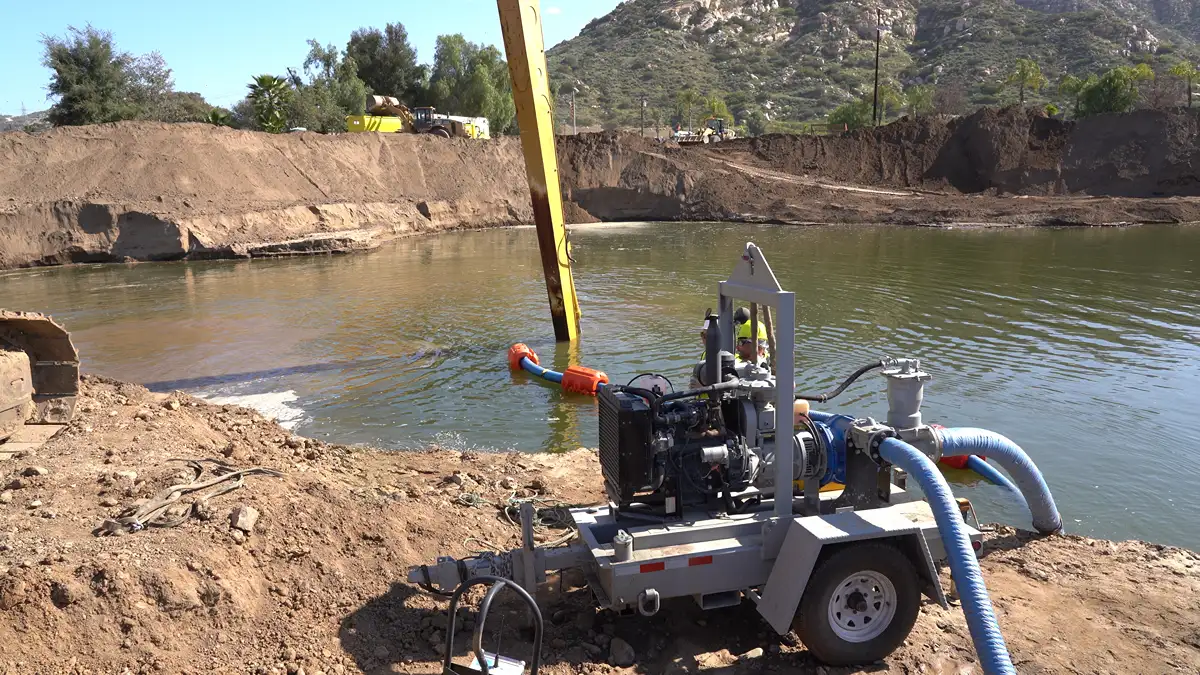
Strategic Equipment Selection: The Competitive Edge in Modern Dredging
In today’s capital-intensive and performance-driven project landscape, the ability of dredging companies to align dredging equipment with site-specific demands has become a true differentiator. Whether the objective is deepening a port, reclaiming coastal land, or maintaining inland waterways, project success hinges not just on execution but on informed, strategic planning from the outset.
Top-tier dredging companies understand that equipment selection is not merely a logistical step; it is a foundational element of risk management, operational efficiency, and long-term return on investment. A dredging company that selects the wrong type of equipment can face project delays, budget overruns, regulatory penalties, and reputational loss. Conversely, a company that matches its equipment precisely to environmental conditions, production targets, and regulatory requirements is more likely to deliver on time, on budget, and with minimal disruption.
From hydraulic systems, such as cutter suction and trailing suction hopper dredgers, to precision-driven mechanical and environmental equipment, every project demands a tailored approach. Leading dredging companies take this seriously, investing in data-driven planning, modular fleets, and integrated execution strategies to support every phase of project delivery from assessment and mobilization to production and compliance reporting.
For procurement leaders, engineering managers, and government buyers, partnering with a technically credible and operationally aligned dredging company is essential. It means selecting not just a vendor, but a strategic partner one that can translate project requirements into reliable, measurable outcomes using the right equipment for the job.
As the industry evolves to meet stricter environmental standards, increased infrastructure demand, and tighter margins, the competitive edge will belong to those who view equipment strategy as a business-critical function capable of shaping project success from the ground up.




